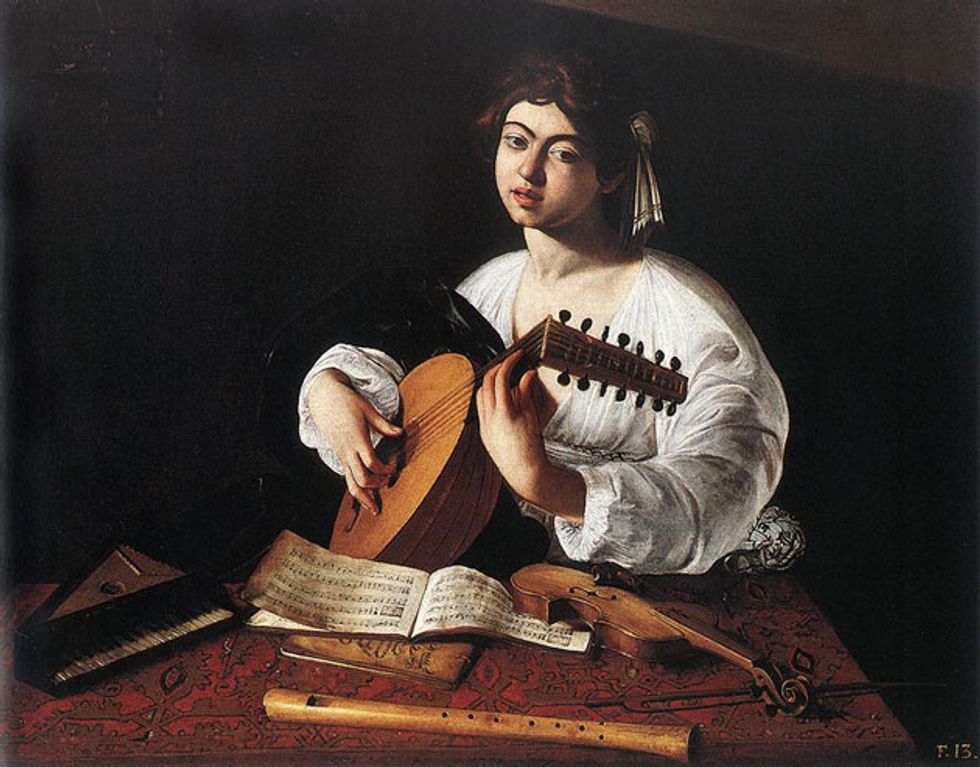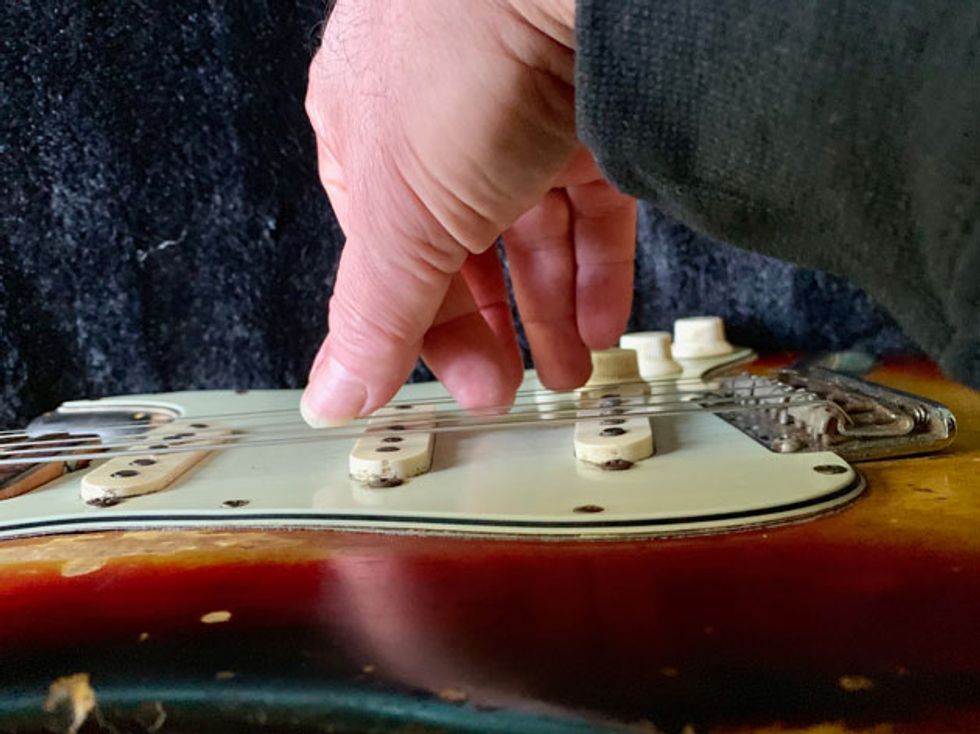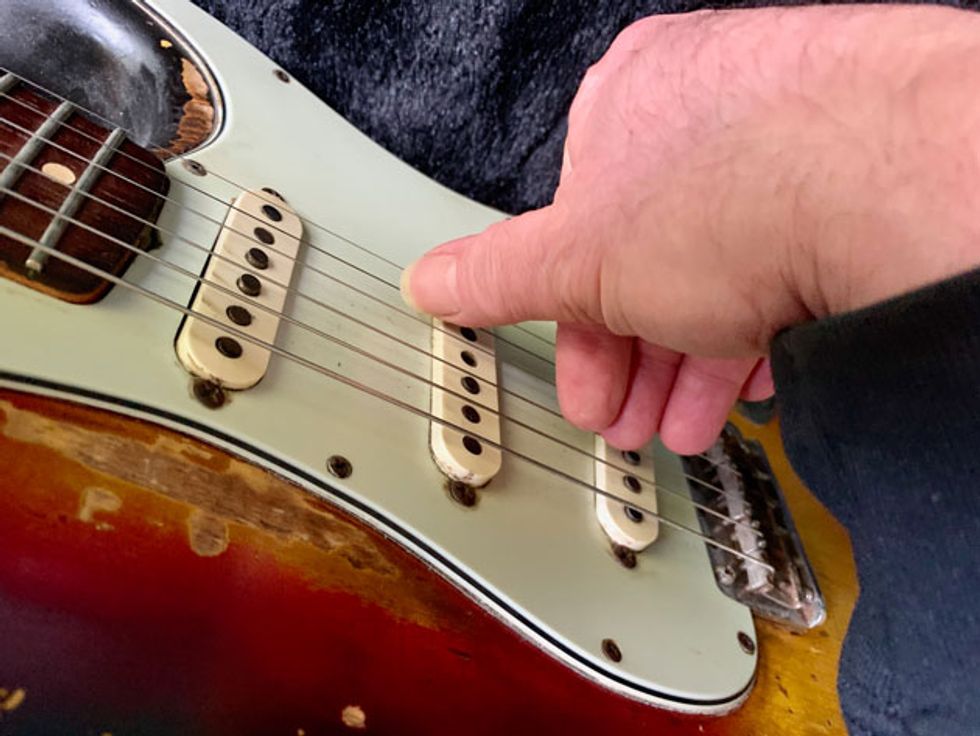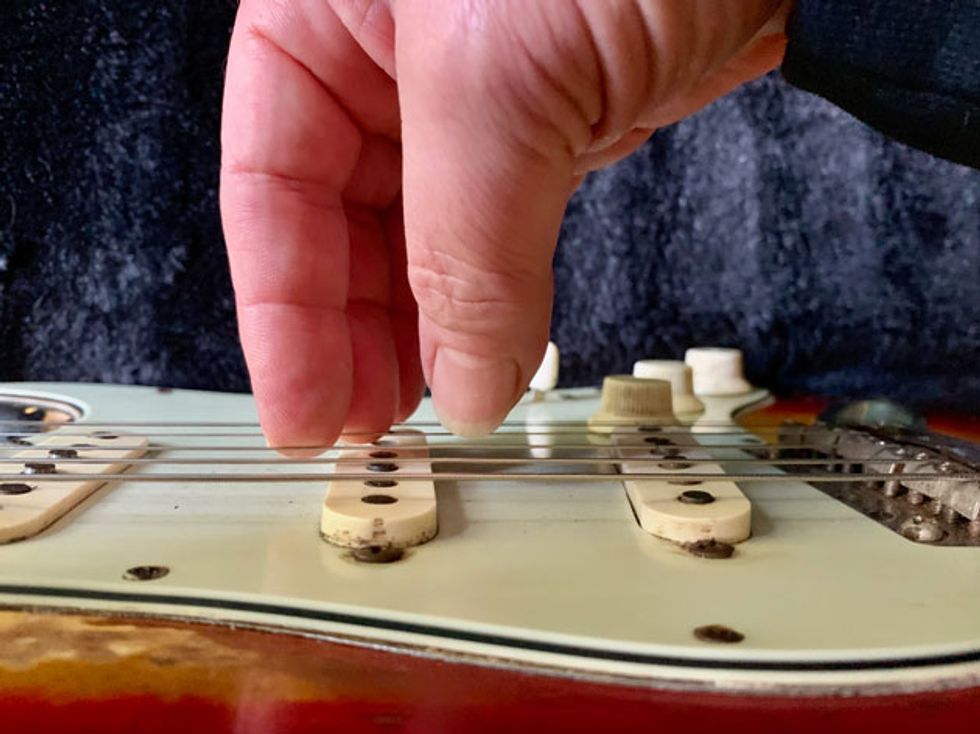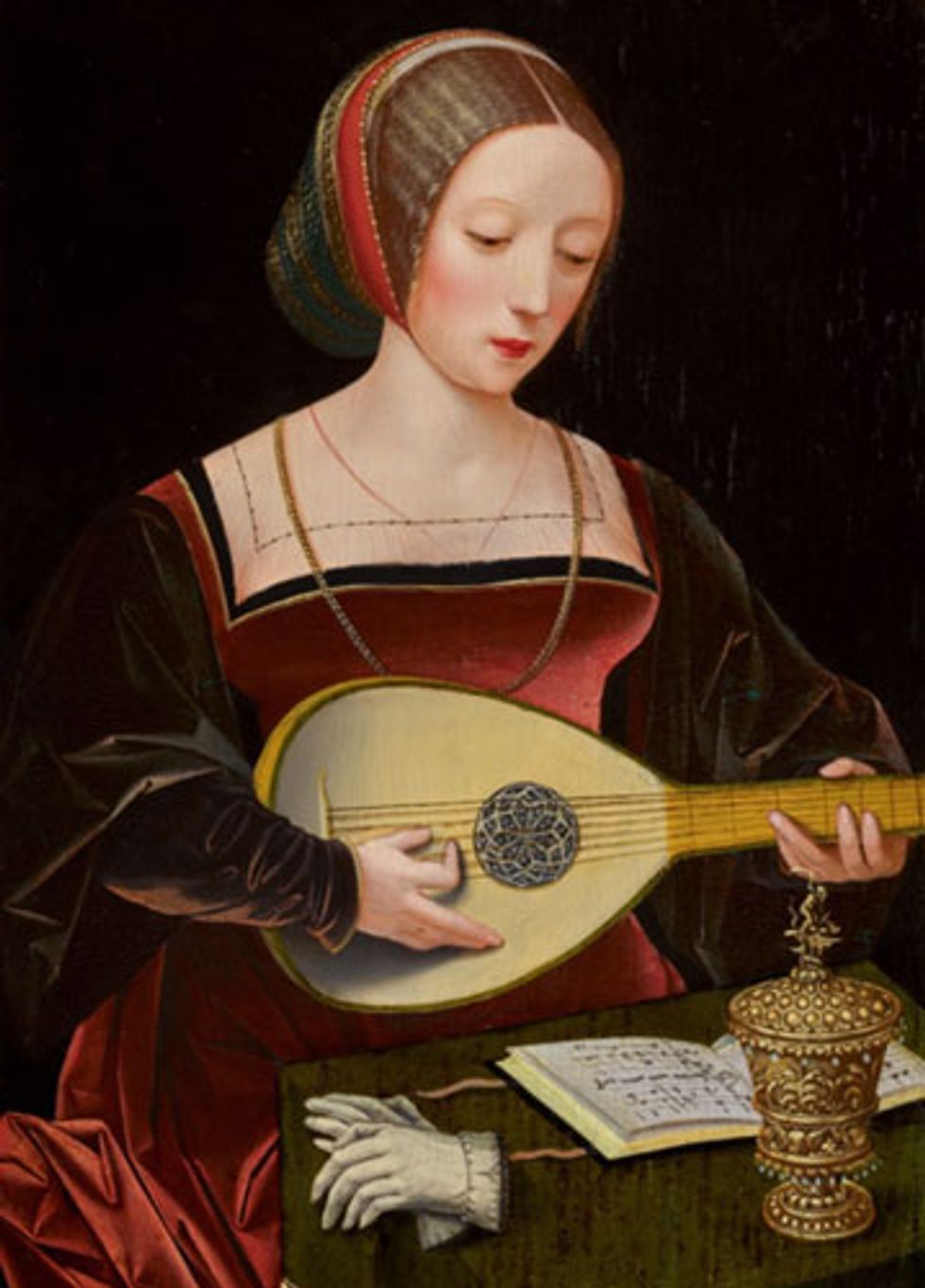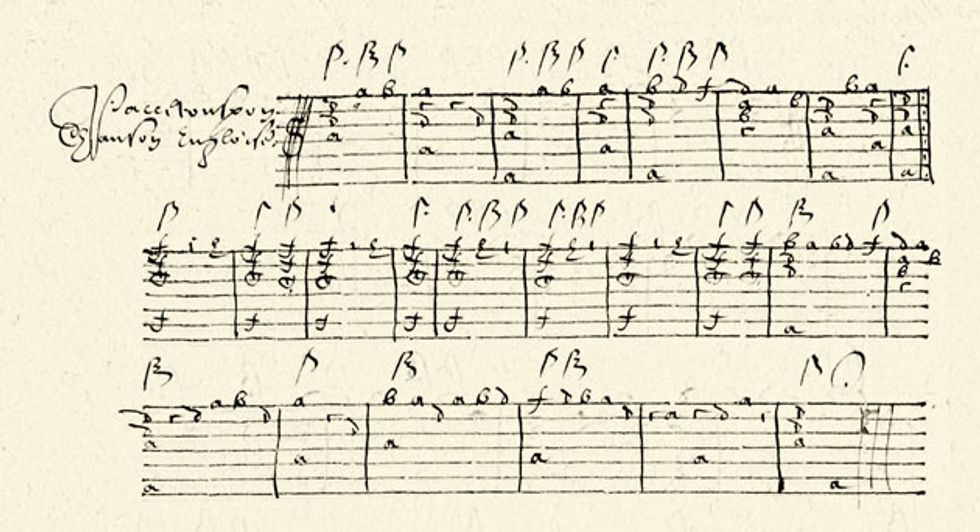Playing without a pick has many advantages—and at least one glaring disadvantage. Nixing the pick permits more sophisticated polyphony, fluid arpeggios, and a greater range of articulation. But it can be a bitch to play speedy melodic lines with fingers alone.
Classical and flamenco guitarists usually play single-note lines with alternating index and middle finger upstrokes. Skilled players can do so at blinding speed. But an alternate approach borrowed from 16th-century lute technique also works, and players without classical training may find it far easier to master. Best of all, you don’t need to know the Elizabethan Renaissance from the Ramada Renaissance to make good use of the method. This technique from Shakespeare’s day works on everything from bop lines to blues licks. It lets you retain the flexibility of fingerstyle playing without sacrificing the ability to execute fast, driving single-note lines.
Ravishing Human Sense
Obviously, we have no recordings of 16th-century music. But we can learn a lot from contemporary descriptions, technique books, and paintings. For example, Caravaggio’s iconic canvas, The Lute Player (Image 1), reveals much about the subject’s right-hand technique. (Players are often depicted with stabilizing fingers resting on the instrument’s body or bridge.)
Image 1
Renaissance lute players (“lutenists” is the formal word) played speedy passages by alternating thumb downstrokes with index finger upstrokes. The thumb usually played on the beat, while the index finger grabbed the upbeat notes. Actually, it’s a lot like pickstyle playing, where we tend to use downstrokes for the strong beats. There were no metronomes back then, so we don’t know exactly how fast lutenists played. But it’s hard to read poet Richard Banfield’s words about the great composer/performer John Dowland (“his heavenly touch upon the lute doth ravish human sense”) and not imagine technical fireworks.
Here’s an example of the technique, performed on a modern acoustic guitar. The piece is Drewrie’s Accordes, an anonymous lute duet from around 1600. (There’s a clear view of the technique at 00:35.)
Note that I’m using silk-and-steel strings rather than the gut strings Renaissance players used, or the nylon strings employed by modern classical guitarists. But does it work on electric guitar with regular steel strings? Hell yeah (Ex. 1).
Click here for Ex. 1
The notation for this vaguely Zep-sounding riff includes classical-style picking-hand fingering, with p indicating thumb strokes and i indicating index finger strokes. A second guitar doubles the part, while a bass performs it an octave lower, “Black Dog”-style. (Yeah, the thumb/finger technique works great on bass too.)
Thumb Over Finger
Check out Ex. 2 for a simple introduction to the technique. The notes outline your basic “blues box” pattern in A, fingered two notes per string.
Click here for Ex. 2
Ex. 2 is fairly easy to play with strictly alternating thumb and index finger strokes. Keep your thumb well forward of your index finger so the digits don’t collide (Image 2).
Image 2
This technique may feel strange at first, since it’s rarely used in modern classical guitar or folk fingerpicking styles. (Though it’s sometimes deployed in Appalachian claw-hammer banjo technique.) But once you get used to it, it’s not painful or awkward.
Ex. 3 is a simple A major scale (A–B–C#–D–E–F#–G#) covering two octaves. It’s a bit trickier than Ex. 2, because you don’t use the same thumb-first fingering pattern on each string.
Click here for Ex. 3
For example, after playing the three notes on the 4th string (index, thumb, index) you must cross your thumb below your index finger to strike the first note on the 3rd string (Image 3). But it’s actually pretty easy, provided there’s enough space between your thumb pad and index fingertip.
Image 3
Ex. 4 is more of a finger-twister, with deliberately challenging string crossings. This one will probably feel weird at first. Start out slow, aiming for the most legato (connected) sound possible. Soon enough you’ll be hauling ass.
Click here for Ex. 4
Tucking the Thumb
It’s also possible to play all these exercises by crossing your thumb behind the first and middle fingers, as seen in Image 4.
Image 4
As often as not, Renaissance portraits depict players with their thumbs tucked behind their fingers this way. Example: this canvas by an anonymous 16th-century painter known to art scholars as the Master of the Female Half-Lengths (Image 5). I don’t play this way myself, but give it a try. You might even find it more comfortable than the thumb-forward method.
Image 5
Fingerstyle Flaws
If you’re strictly a pick player, you might find this technique irrelevant. But speaking as a 95-percent fingerstyle guy, it helps me play melodic lines faster and more forcefully. Do you think it may be a useful addition to your technical toolbox? Let me know!
The Original Tablature
Are you the sort of player who finds it easier to learn music from tablature than from traditional notation? If so, you may be more old-school than you realize.
Lute music was traditionally written not in notation, but in tab. It’s strikingly similar to modern tablature, but with letters rather than numbers indicating the target frets (Image 6). The letter a indicates an open string. The letters b, c, and d denote the first, second, and third frets, and so on. The flags above the letters indicate rhythm.
Image 6
You can totally learn Renaissance pieces directly from 400-year-old manuscripts, but you need to retune one string to mimic lute tuning. To do so, clamp a capo on the third fret and lower the third string a half-step. Or you can just skip the capo, drop the 3rd string to F#, and play the music a bit lower than at its original pitch. For more examples, just google “Renaissance lute tablature.”
Remember: If anyone ever accuses you of lacking the discipline to learn music reading “the old-fashioned way,” you can say, “What? Four hundred years isn’t old-fashioned enough?”



